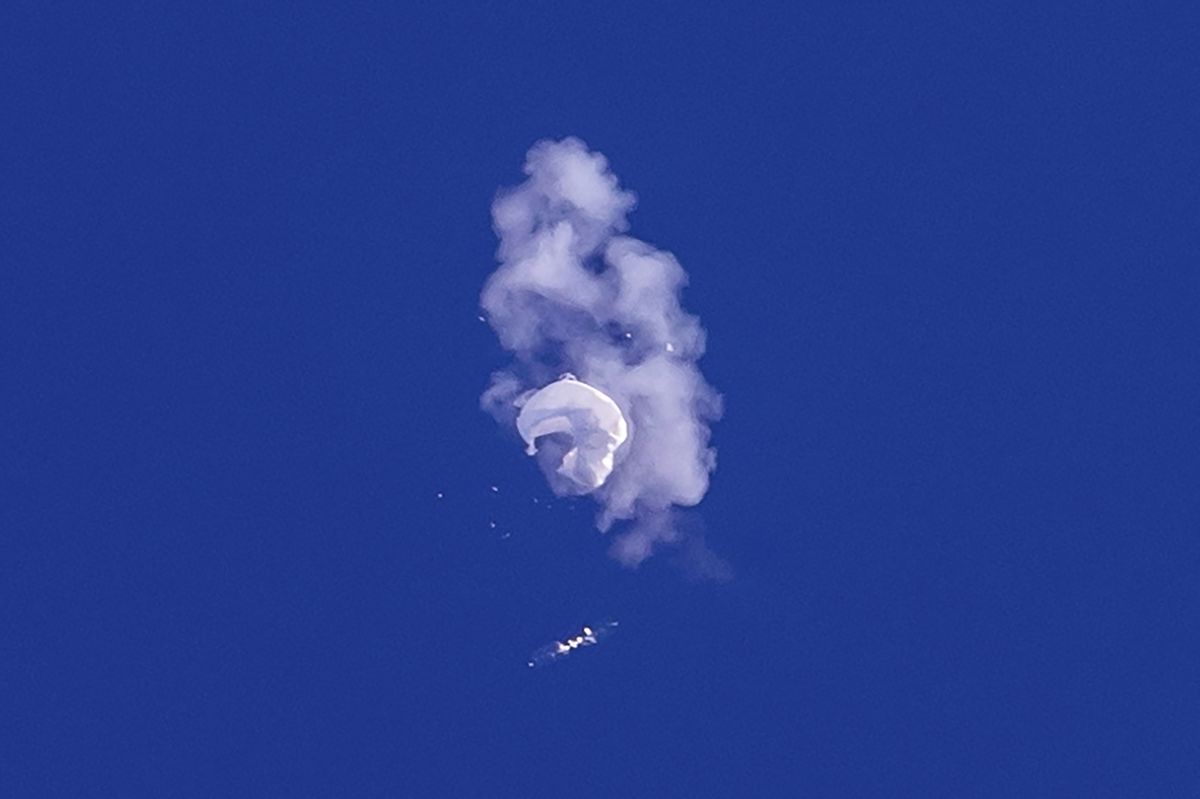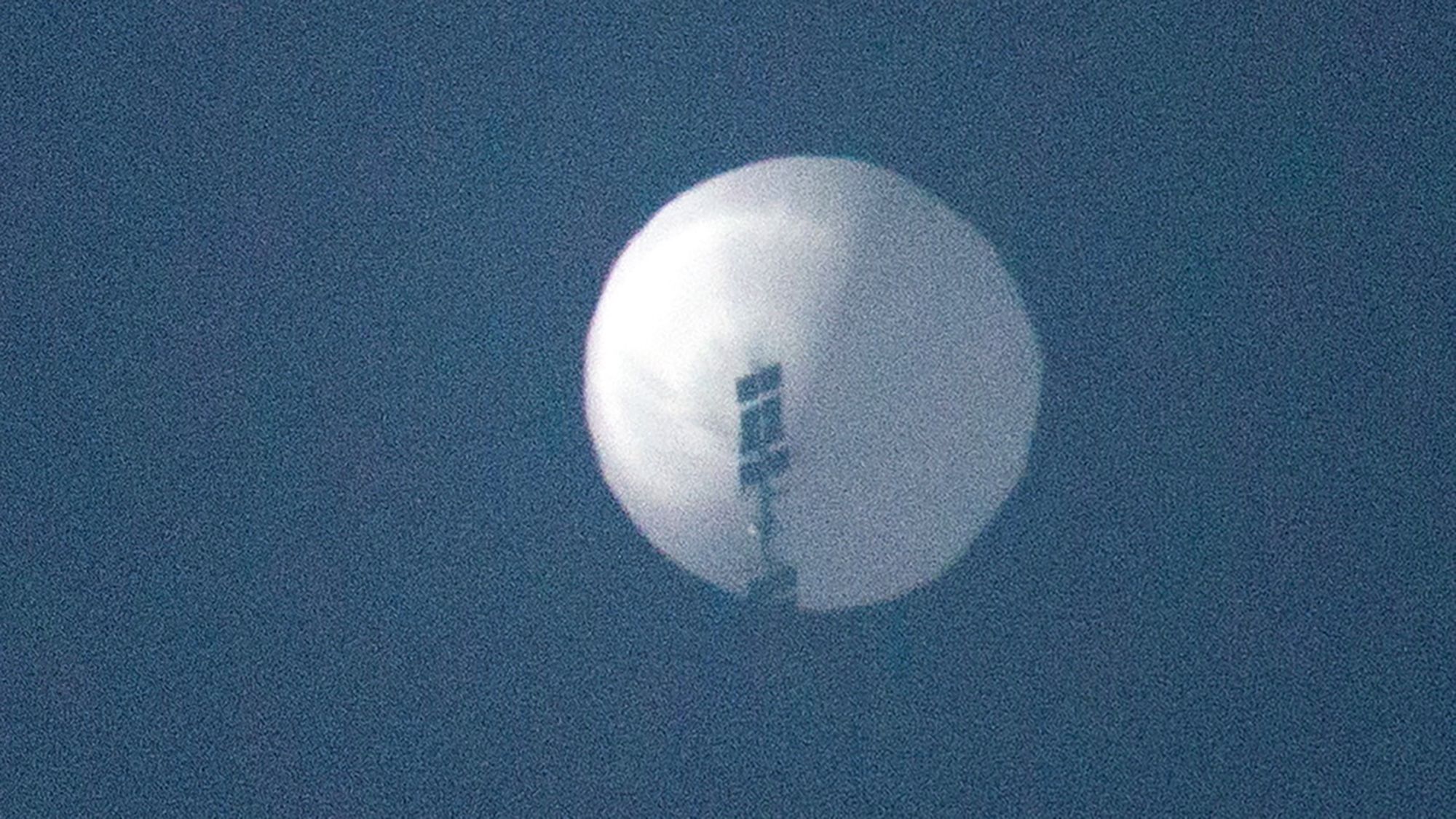BEIJING, China — China said on Monday that the U.S. used indiscriminate force when it shot down a suspected Chinese spy balloon. It said that the incident “seriously affected and hurt both sides’ efforts and progress in stabilizing Sino-US relations.”
The balloon was shot down off the coast of Carolina after passing over sensitive military sites across North America. China maintained that the flyover was an accident involving a civilian plane.
On Sunday, Vice Foreign Minister Xie Feng said that he filed a formal complaint with the U.S. Embassy regarding the “U.S. military attack on a Chinese civilian unmanned airship.”
“However, the U.S. turned a deaf ear and insisted on indiscriminate use of force against the civilian airship about to leave U.S. airspace, clearly overreacted, and seriously violated the spirit of international law and international practice,” Xie said.
The presence of the balloon in the skies above the United States dealt a severe blow to already strained US-Chinese relations, which have been declining for years. It prompted Secretary of State Antony Blinken to cancel an important trip to Beijing aimed at defusing tensions.
Xie reiterated China’s claim that the balloon was a Chinese civil unmanned airship that erroneously entered U.S. airspace, calling it an “accidental incident caused by force majeure.”
U.S. Officials Shoot DownThe Balloon Over The Ocean
China will “resolutely safeguard Chinese companies’ legitimate rights and interests, resolutely safeguard China’s interests and dignity and reserve the right to make further necessary responses,” he said.
According to U.S. officials, U.S. President Joe Biden issued the shootdown order after being advised that the best time for the operation would be over water. Military officials determined that bringing the balloon down over land from a height of 60,000 feet (18,000 meters) would endanger people on the ground.
“What the United States has done has seriously impacted and harmed both sides’ efforts and progress in stabilizing Sino-US relations since the Bali meeting,” Xie said, referring to a recent meeting in Indonesia between Biden and his Chinese counterpart, Xi Jinping, that many hoped would create positive momentum for improving ties that have fallen to their lowest level in years.
On Monday, Foreign Ministry spokesman Mao Ning provided no new information, reiterating China’s insistence that the object was a civilian balloon intended for meteorological research, needed more ability to steer and entered U.S. airspace, accidentally diverging from its course. She also didn’t say what other steps China planned to take in response to Washington’s handling of the issue and the cancellation of Blinken’s trip, which would have made him the highest-ranking U.S. official to visit since the COVID-19 pandemic began.
“We have stated that this is a completely isolated and accidental incident caused by force majeure, but the U.S. deliberately hyped up the incident and even used force to attack,” Mao said during a daily briefing. “This is a reckless and unacceptable action.”
Balloons Spotted Over Latin America And Japan
From Latin America to Japan, balloons thought to be Chinese have been spotted. Yoshihiko Isozaki, Japan’s Deputy Chief Cabinet Secretary, told reporters on Monday that a flying object similar to the one shot down by the U.S. had been spotted twice over northern Japan since 2020.
“We’re still looking into them about the latest case in the United States,” he said.
Mao confirmed the identity of a Chinese balloon recently spotted over Latin America, describing it as a civilian airship used for flight tests.
“Due to weather and its limited self-control ability, the airship deviated significantly from its planned route and accidentally entered the space of Latin America and the Caribbean,” Mao explained.
Washington and Beijing disagree on things like trade and human rights, but China is especially upset about what it says are violations of its sovereignty and territorial integrity by the US and others.
Beijing is very against the U.S. selling weapons to Taiwan and against foreign politicians visiting the island, which it claims as Chinese territory and plans to take back by force if it has to.
Bejing Halted Talks With The U.S. Over The Balloon
It reacted to then-U.S. House Speaker Nancy Pelosi’s visit to the island in 2022 by firing missiles over it and staging threatening military drills seen as a practice for an invasion or blockade. Beijing also halted talks with the U.S. on issues unrelated to military tensions, such as climate change.
Last week, Mao warned Pelosi’s successor, House Speaker Kevin McCarthy, not to visit Taiwan, implying that China would respond in kind.
“China will tenaciously defend its sovereignty, security, and development interests,” Mao declared. McCarthy claimed that China had no right to tell him where and when he could travel.
China also doesn’t like it when foreign military surveillance planes fly in international airspace near its coast or when U.S. and other foreign warships pass through the Taiwan Strait, which it says is a deliberate act of provocation.
A US Navy plane conducting routine surveillance near the Chinese coast collided with a Chinese fighter plane in 2001, killing the Chinese fighter pilot and damaging the American plane, forcing it to make an emergency landing at a Chinese naval airbase on the southern Chinese island province of Hainan. China detained the 24-member U.S. Navy aircrew for ten days until the U.S. expressed regret for the death of the Chinese pilot and for landing without permission at the base.
South China Sea Continues To Hold Tension
Another major source of contention is the South China Sea. China claims virtually the entire strategically important sea and protests when U.S. Navy ships sail past Chinese military installations there.
“The presence of this surveillance balloon over the United States in our skies is a clear violation of our sovereignty, a clear violation of international law, and unacceptable,” Blinken said at a news conference with his South Korean counterpart on Friday. And we’ve made that clear to China.”
“I believe that any country that has its airspace violated in this manner would respond similarly, and I can only imagine what the reaction would be in China if they were on the other end,” Blinken said.
According to Oriana Skylar Mastro, a Stanford University expert on Chinese military affairs and foreign policy, China’s weather balloon explanation should be rejected outright.
China May Have Lost Control Over The Balloon
“This is something that countries frequently say about surveillance assets,” Mastro said.
China may have made a mistake and lost control of the balloon, but Mastro believes it was unlikely to be a deliberate attempt to disrupt Blinken’s visit.
The decision by the U.S. administration to go public and then shoot down the balloon represents a departure from its usual approach of dealing with Beijing on such matters privately, possibly in the hope of changing China’s future behavior.
However, Mastro believes that Beijing will respond negatively.
“They’re probably going to dismiss that and continue as things have been. So I don’t see a clear path to improved relations shortly.”
SOURCE – (AP)













